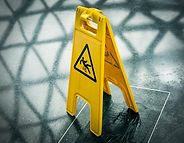






The Process
From the Seed
The first thing to do is to find and prepare the location to plant your seeds. Calendula is an annual plant that's easy to grow on average, moderately fertile, well-drained soils that get full sunlight. It can be planted in flower beds, borders, cottage gardens, cutting gardens, or pots or containers. Follow spacing guidelines and plant and water the seeds. Then just wait!!! you will have your first flower blooming in about 7 weeks.
Time to Harvest
As soon as you see the first flower, pick it up, then the plant will send more and more as you continue harvesting, pick the flower before seeds start to form, otherwise the plant will decrease the amount of new buds forming.
Collecting
The ideal time of the day to harvest the flowers is around 12 noon, when the sun is getting stronger and the flower has dried from the morning dew, you will feel a sticky quality to the touch, that is a good sign, it is the medicinal resin within the plant, Calendula petals are rich in naturally occurring compounds called flavonoids. Once you have collected all the flowers for the day, they are ready to be dehydrated.
Time to Dehydrate
Once you have all your flowers picked, it is time to dehydrate them, it is very important to dry the flowers completely, any residual water will destroy your project!!!! I use a dehydrator, but there are other ways to dry the flowers. Find the one that works for you best.
Cut off the blossoms near the base and arrange them single layer on your dehydrator's shelves. Leave a bit of space in between each blossom. Turn your dehydrator on. If there is a thermostat, set it to 125ºF for 8-10 hours.

Infusing
Place the dry flowers into an airtight container, fill it up with your preference of carrier oil all the way to the top. Write down the date and ingredient list in a label and store in a cool and dry place for 6-8 weeks.
Strain the oil
After 6- 8 weeks, strain the herbs out using cheesecloth or paper filter
Pour the infused oil into glass bottles and store in a cool, dark place.
How to Store Calendula Oil
Store calendula products in a dry, dark place free of moisture. If you buy calendula at the store, look at the package for a "best by" date. Make sure you use it up before it expires.
If you are storing the dried petals, put them in an airtight container. If you've made an oil, tincture, or cream with calendula, store it in an airtight container and keep it in a cool, dry place. You can store you oil in the refrigerator too, it will last longer and also feels good in the skin, extra cooling effect!

Side Effects and Precautions
When applied to the skin: Preparations of calendula flower are likely safe for most people. Pregnancy: Don't take calendula by mouth if you are pregnant. It is likely unsafe. There is a concern that it might cause a miscarriage. It's best to avoid topical use as well until more is known.
Breast-feeding: There isn't enough reliable information to know if calendula is safe to use when breast-feeding. Stay on the safe side and avoid use.
Allergy to ragweed and related plants: Calendula may cause an allergic reaction in people who are sensitive to the Asteraceae/Compositae family. Members of this family include ragweed, chrysanthemums, marigolds, daisies, and many others. If you have allergies, be sure to check with your healthcare provider before taking calendula.
A patch test refers to a diagnostic exam that people can use to determine whether specific products result in skin irritation or an allergic reaction. Many different substances can cause a skin reaction, chemicals, preservatives, perfumes, and cosmetics.
Patch testing involves applying a small amount of a substance or product to the skin and leaving it on to see if a reaction develops.
“These statements have not been evaluated by the Food and Drug Administration.
This product is not intended to diagnose, treat, cure or prevent any disease”


